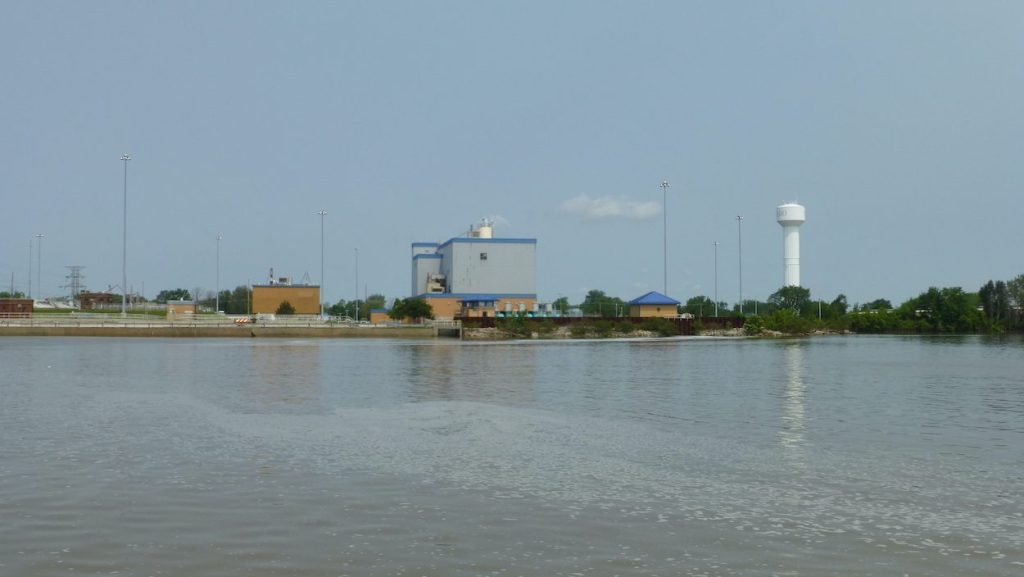
In 2012 and 2014, Great Lakes Legacy Act (GLLA) sediment site characterizations were conducted in the lower five miles of the Maumee River (I-280 to Maumee Bay). Findings from these earlier site characterizations informed a 2021 data gap investigation focusing on areas near the City of Toledo wastewater treatment plant (WWTP) and the sway bridge. The final Sediment Characterization Report for the 2021 site characterization was issued in August 2022. A link to this document is available below. A Focused Feasibility Study was initiated in 2022 and will be completed in 2023.
Project Location
Sampling results indicated that Polycyclic Aromatic Hydrocarbons (PAHs) are the main constituent of concern at the Sway Bridge Contaminated Sediment Project Area. This area is primarily on the east side of the river around the second railroad bridge when headed upstream from the mouth/Maumee Bay. Sampling results indicated that polychlorinated biphenyls (PCBs) are the main constituent of concern at the WWTP Contaminated Sediment Project Area. This area is primarily on the west side of the river near the Toledo WWTP. The Duck Creek area is located in the same vicinity and has been listed as needing no further GLLA action.
Project Benefits
• Reduce or remove impairments negatively affected aquatic communities.
• Improve overall environmental health and usability of this area.
Project Objectives
• Determine if cleanup of contaminated sediment is warranted and if so, clean up/removal of contaminated sediments.
• Improve water quality, habitat, and biological communities.
• Encourage economic redevelopment and reuse of the area.
Project Links
• From U.S. EPA: Focused Feasibility Study Lower Maumee River Wastewater Treatment Plant and Sway Bridge (September 2023)
• From U.S. EPA: Public Information Session on Proposed Contaminated Sediment Clean-up Plan (August 2023)
• From Ohio EPA: Lower Maumee River & Swan Creek Contaminated Sediments Remediation Fact Sheet (February 2023)
• From U.S. EPA: Lower Maumee River Sediment Characterization Report (August 2022)
• From U.S. EPA: Final Maumee Phase 2 Site Characterization Report (May 2014)
• From U.S. EPA: Final Maumee River Phase 1 Site Characterization Report (June 2012)
Project Partners
Ohio EPA and U.S. EPA are working with community partners and other federal, state, and local governmental agencies to evaluate and cleanup any contaminated sediments (as appropriate) utilizing the Great Lakes Restoration Initiative (GLRI) and other non-federal funding.
Photo credits:
Banner image: Hull and Associates
Project introduction image: Ohio EPA
